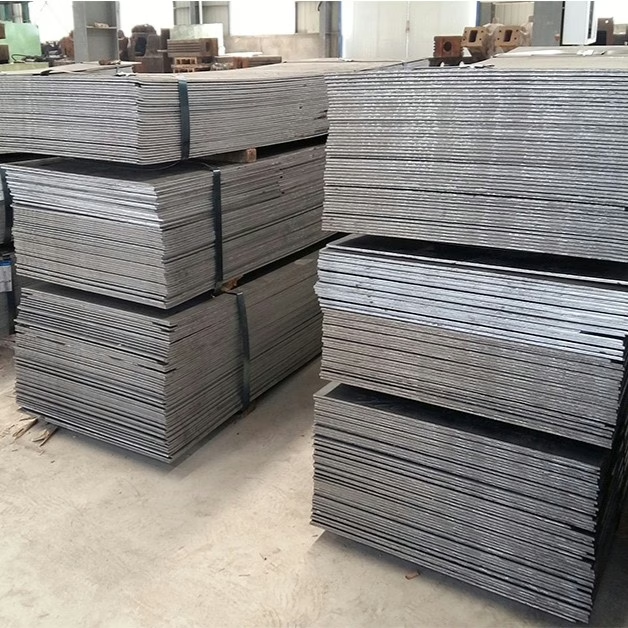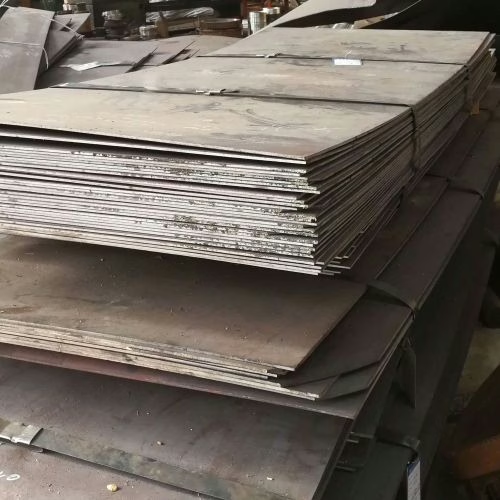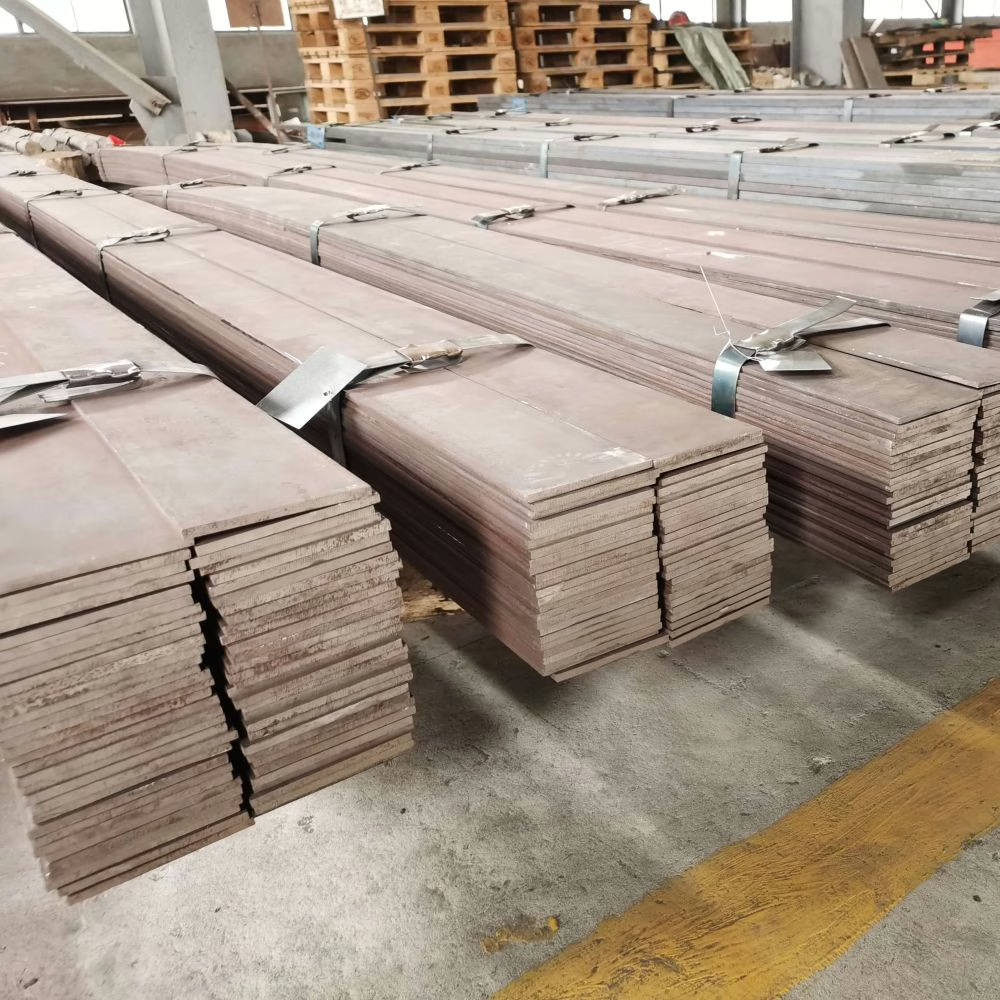
Yüksek Hızlı Çelikler Kataloğu
Yüksek Hızlı Çelikler Kataloğu
Ayrıntıları görüntülemek için herhangi bir ürüne tıklayın



Yüksek Hızlı Çelik Nedir?
Yüksek hızlı takım çeliği (HSS), yüksek kesme hızlarında malzemelerin işlenmesi için özel olarak tasarlanmış, karmaşık bir demir bazlı alaşımdır. Metallerin yüksek hızlı kesilmesinde kullanıldığında, yüksek sıcaklıklar oluşur ve bu da sıradan çeliğin sertliğini ve kesme kabiliyetini kaybetmesine neden olur. Ancak yüksek hızlı takım çeliği, neredeyse kızgın sıcaklıklara ısıtıldığında bile sertliğini kaybetmez ve iyi kesme sertliğini korur.
Bileşim ve Alaşım Elementleri
Yüksek hızlı takım çelikleri esas olarak karbon, krom, vanadyum, molibden veya tungstenden veya bunların kombinasyonlarından ve bazen de önemli miktarda kobalttan oluşur. Yüksek hızlı çeliklerdeki toplam alaşım içeriği genellikle 20% ile 40% arasında değişir. İster molibden ister tungsten olsun, tüm yüksek hızlı çelikler yaklaşık 4% krom içerir. Yüksek hızlı çeliğin çeşitli alaşım elementleri, sertleştirilebilirliğini, yüksek aşınma direncini, ısıl yumuşamaya karşı direncini ve mükemmel tokluğunu belirleyen temel faktörlerdir ve bu da onu endüstriyel kesme işlemleri için ideal kılar.
Başlıca alaşım elementleri ve etkileri şunlardır:
- Tungsten (W): HSS'nin T serisi, diğer önemli alaşım elementleri olan krom, vanadyum ve kobaltın yanı sıra 12% ila 20% tungsten içerir. Tungsten çok güçlü bir karbür oluşturan elementtir ve önemli miktarda ilavesi, yüksek sıcaklıkta kararlı alaşım karbürlerinin büyük hacimlerde üretilmesini sağlayarak aşınma direncini ve "kırmızı sertliğini" önemli ölçüde artırır. Erken dönemde popüler olan 18-4-1 (T1) sınıfı, yaklaşık 18% tungsten içerir.
- Molibden (Mo): M serisi, diğer alaşım elementleri olarak krom, vanadyum, tungsten ve kobalt ile birlikte yaklaşık 3,5% ila 10% molibden içerir. Molibden, tungsten gibi güçlü bir karbür oluşturucudur ve tavlama direncine ve kesme sıcaklıklarında yüksek sertliğin ("kırmızı sertlik") korunmasına önemli ölçüde katkıda bulunur. Molibden türleri genellikle daha ucuzdur ve T serisi çeliklere göre daha yüksek aşınma direncine ve ısıl işlemde daha az bozulmaya sahiptir.
- Krom (Cr): Tüm yüksek hızlı çelikler yaklaşık %4% krom içerir. Krom, kolayca çözünen ve tipik ısıl işlem sıcaklıklarında çözeltiye alınan karbürler (örneğin, M23C6 ve M7C3) oluşturarak sertleştirilebilirliği artırır. Ayrıca, yüksek işleme sıcaklıklarında pullanma direncini de artırır.
- Vanadyum (V): HSS'deki vanadyum içeriği değişir ve genellikle vanadyum içeriği arttıkça karbon içeriği de artar. Vanadyum çok güçlü bir karbür oluşturucudur ve çok sert, aşınmaya dayanıklı MC karbürler oluşturur. Vanadyum miktarının artması, daha fazla aşınma direnci ve sıcak sertlik sağlar. Vanadyum karbür aynı zamanda tane inceltici bir madde görevi de görür.
- Kobalt (Co)Kobalt, kesme kabiliyetini artırmak için bazı HSS kalitelerine eklenir ve bazı T ve M serisi çeliklerde önemli bir alaşım elementidir. Başlıca etkisi, sıcak sertliği artırarak kesme sırasında yüksek takım sıcaklıklarına ulaşıldığında kesme verimliliğini artırmaktır. Kobalt, erime noktasını yükseltir ve ısıl işlem sıcaklıklarını artırabilir. Kırmızı sertliği artırırken, kobalt ilavesi yüksek hızlı takım çeliklerinin kırılganlığını hafifçe artırır. Kobalt karbür oluşturmaz, ancak diğer alaşım elementlerinin çökelme sertleştirme etkisini artırır.
- Karbon (C)Yüksek karbon içeriği, sert bir martensitik matris üretmek ve birincil karbürler oluşturmak için çok önemlidir; her ikisi de aşınma direnci sağlar. Karbon içeriği genellikle 0,70% ile 1,5% arasında değişir. Düşük karbonlu kaliteler daha tokken, yüksek karbonlu kaliteler daha yüksek sertlik ve aşınma direnci sunar.
- Azot (N): Azot, hava ile eritilmiş HSS'de genellikle 0,02% ile 0,03% arasında miktarlarda bulunur. Azot miktarını daha yüksek silisyum ile 0,04-0,05%'ye kasıtlı olarak artırmak, elde edilebilecek maksimum temperlenmiş sertliği hafifçe artırabilir ve karbür morfolojisini değiştirebilir.
Isıl İşlem
- AustenitleştirmeYüksek hızlı çelik yaklaşık 840°C'ye ısıtıldığında, ferrit ostenite dönüşür ve bazı alaşım karbürleri çözünebilir. 1120°C veya daha yüksek bir sıcaklığa ısıtıldığında, tüm M23C6 karbürleri çözünür ve 50%'ye kadar M6C ve MC karbürleri de çözünebilir. Bu, karbonu ostenit matrisine çözerek sertleştirilebilirlik, sıcak sertlik ve temperlemeye karşı direnç için gerekli alaşım ve karbon içeriğini sağlar.
- SöndürmeÖstenitleme işleminden sonra HSS, durgun havada maksimum sertliğe yakın bir seviyeye kadar soğutulabilir, ancak daha hızlı ısı giderimi ve daha yüksek sertlik seviyeleri için genellikle ılık yağda söndürülür. Söndürme, yüksek karbonlu östenitin çoğunu martenzite dönüştürür, ancak bir miktar östenit de korunabilir.
- TemperlemeTemperleme sonrası son mikro yapı, esas olarak temperlenmiş martensit ve iyi dağılmış sert karbürlerden oluşur. Yüksek hız çeliği, ikincil sertleştirme çeliğidir. Çoklu temperleme, artık osteniti martensite dönüştürebilir.
Özellikler
- SertlikSertlik, oda sıcaklığında ölçülen, elmas sertliğinde bir çentik delme ucuyla penetrasyona karşı dirençtir. HSS genellikle 64 HRC'ye kadar sertleşmeye yetecek kadar karbon içerir. M1 ve M7 gibi genel amaçlı HSS'ler genellikle 64-66 HRC'ye kadar ısıl işleme tabi tutulurken, kobalt içeren HSS genellikle 65-67 HRC'ye ulaşır. Süper yüksek hız çelikleri, özellikle M40 serisi, 70 HRC'ye kadar ısıl işleme tabi tutulabilir.
- Sıcak Sertlik (Kırmızı Sertlik)Bu, çeliğin yüksek sıcaklıklarda yüksek sertliğini koruyabilme yeteneğidir. Bu özellik, esas olarak kobalt, vanadyum ve molibden ile artırılır. HSS takımlar, yaklaşık 650°C (1200°F) sıcaklıklara kadar keskin bir kesme kenarı koruyabilir.
- Aşınma DirenciBu, aşınma direncidir. Matris sertliği ve bileşimi, çökelmiş ikincil karbürler (M2C ve MC) ve fazla alaşım karbürlerinin hacmi ve yapısı, aşınma direncini büyük ölçüde etkiler. Daha yüksek sertlik, özellikle aşındırıcı kesme koşullarında, genellikle daha yüksek aşınma direncine yol açar.
- SertlikHSS, endüstriyel kesme işlemlerinde etkili kullanım için genellikle iyi bir tokluğa sahiptir. Özellikle kesintili kesme uygulamalarında, karbür malzemelerden belirgin şekilde daha tokturlar. Ancak, aşırı yüksek sertlik ve yüksek karbür içeriği, diğer takım çeliklerine kıyasla tokluğu azaltabilir. P/M HSS, homojen ve ince karbür dağılımı sayesinde gelişmiş tokluk sunar.
- SertleştirilebilirlikHSS o kadar derin sertleşir ki ticari olarak karşılaşılan hemen hemen her bölüm merkezden yüzeye kadar aynı sertliğe sahip olur.
Sınıflandırmalar
Burada Amerikan Demir ve Çelik Enstitüsünü kullanıyoruzAISI) sınıflandırması.
- T Serisi (Tungsten Yüksek Hızlı Takım Çelikleri): Bu çelikler 12% ila 20% tungsten içerir ve 'T' harfiyle gösterilir. 18-4-1 (18% W, 4% Cr, 1% V) olarak da bilinen T1, klasik bir örnektir. T1 tipi molibden veya kobalt içermez. Kobalt bazlı tungsten tipleri ise T4 ile T15 arasında değişir ve çeşitli miktarlarda kobalt içerir.
- M Serisi (Molibdenli Yüksek Hızlı Takım Çelikleri): Bu çelikler yaklaşık 3,5% ila 10% molibden içerir ve 'M' harfiyle gösterilir. M serisi çelikler genellikle daha ucuzdur ve T serisi çeliklere göre daha yüksek aşınma direncine ve ısıl işlemde daha az bozulmaya sahiptir. Yaygın genel amaçlı molibden çelikleri arasında M1, M2 ve M7 bulunur.
Kaplamalar
Yüksek hızlı takım çelikleri, gelişmiş performans ve artırılmış takım ömrü için fiziksel buhar biriktirme (PVD) teknikleri kullanılarak titanyum nitrür, titanyum karbür ve diğer kaplamalarla kaplanabilir. PVD, HSS için eski kimyasal buhar biriktirme (CVD) yöntemine göre daha düşük sıcaklıklarda çalıştığı ve sonrasında ısıl işlem gerektirmediği için tercih edilir.
Uygulamalar
Yüksek hızlı takım çelikleri, en yaygın kesici takım türlerinin çoğunda yaygın olarak kullanılır. Bunlar şunlardır:
- Tek uçlu torna takımları (takım uçları, kesme takımları, uçlar).
- Matkaplar, raybalar, kılavuzlar, frezeler, uç frezeleri, frezeler, testereler ve broşlar.
- Ağır kesimler veya yüksek hızlı işlemeler için takımlar.
- Form araçları.
- Sıcak şekillendirme kalıpları, ince kesme ve diğer sıcak ve soğuk şekillendirme uygulamaları.
- Rulman uygulamaları (örneğin havacılık rulmanları).
- Yüksek yük, yüksek sıcaklık yapısal bileşenleri.
- Kamyon şanzıman dişli boşluklarındaki kıvrımlı yivlerin broşlanması gibi belirli özellikler gerektiren özel aletler.
SSS
Yüksek hızlı takım çelikleri, çoğunlukla karbon, krom, vanadyum, molibden veya tungstenden oluşan ve çoğunlukla kobalt ilavesiyle birleştirilen karmaşık demir esaslı alaşımlardır. Bu elementler, malzemeye dağılmış çok sert karbür parçacıkları oluşturarak özelliklerini geliştirir.
Bu isim, malzemeleri yüksek kesme hızlarında işleyebilme kabiliyetlerinden gelir. Bu, yüksek hızlı kesme işlemleri sırasında oluşan yüksek sıcaklıklarda (genellikle 540-600°C'ye (1000-1100°F) kadar) yüksek sertliklerini ve yumuşamaya karşı dirençlerini koruyabilmelerini sağlayan "kırmızı sertlik" veya "sıcak sertlik"lerinden kaynaklanır.
Yüksek hızlı çelikler, ısıl işlemden sonra genellikle 63 ila 68 HRC veya daha yüksek oda sıcaklığı sertliğine ulaşabilir. Sertleştirilmiş sertlik değerleri, özel kaliteye ve ısıl işleme bağlı olarak genellikle 60 ila 69 HRC arasında değişir.
HSS typically contains 0.70-1.5% carbon, and total alloy contents generally vary from 20-40%58. Common alloying elements and their ranges include Chromium (3.5-4.5%), Molybdenum (0-10.00%), Vanadium (0.9-4.2%), Tungsten (0-18.70%), and Cobalt (0-10.50%)5…. There are two main groups: M-types (molybdenum as primary alloying element) and T-types (tungsten as primary alloying element)2….
Yüksek hızlı çelikler demir bazlı alaşımlardır ve paslanmaz çeliklerin aksine, temel işlevleri "paslanma"ya (oksidasyon) karşı doğal bir korozyon direncine sahip değildirler. Minimum 10.5% krom içeren paslanmaz çelikler, korozyona karşı koruyucu bir krom oksit filmi oluştururlar33…. HSS'de bu yüksek krom içeriği veya koruyucu film bulunmadığından, uygun bakım veya kaplama yapılmadığı takdirde paslanmaya karşı hassastır.
Yüksek hızlı çelik, yüksek sertliği, mükemmel aşınma direnci (sert karbürlerden) ve ısıtıldığında bile keskinliğini koruyan iyi sıcak sertliği sayesinde bıçaklar için oldukça uygun olabilir. Ancak, aşırı sertliği ve karbür içeriği nedeniyle tokluğu diğer takım çeliklerine kıyasla daha düşük olabilir; bu da darbe altında kırılmaya veya çatlamaya eğilimli olabileceği anlamına gelir.
HSS, alaşımlı takım çeliklerinin bir sınıflandırmasıdır. Temel olarak iki ana gruba ayrılır: molibden tipi (M serisi) ve tungsten tipi (T serisi). Belirli kaliteler arasında M1, M2, M7, M10, M33, M42, T1 ve T15 bulunur.
HSS takımları, karbon çelikleri, alaşımlı çelikler, dökme demirler (gri ve dövülebilir demir gibi), paslanmaz çelikler, alüminyum ve alaşımları, bakır ve alaşımları, bronz ve magnezyum dahil olmak üzere çok çeşitli malzemeleri kesmek için kullanılır. Özellikle sert, yüksek mukavemetli çeliklerin ve dökme demir ve dökme çelik gibi pullu malzemelerin işlenmesinde etkilidirler125….
Evet, HSS, diğer metalleri kesmek ve şekillendirmek için özel olarak tasarlanmış ve yaygın olarak kullanılmaktadır. Çeşitli metal kesme aletleri için yaygın bir malzemedir.
Hayır, HSS yumuşak çelik değildir. Yumuşak çelik, düşük karbonlu bir çeliktir. HSS, yumuşak çeliğin aksine, yüksek sertlik, aşınma direnci ve yüksek sıcaklıklarda yumuşamaya karşı direnç için tasarlanmış, yüksek karbon ve alaşım içeriğine (örneğin tungsten, molibden, krom, vanadyum, kobalt) sahip karmaşık bir demir bazlı alaşımdır.
Hayır, HSS karbür ile aynı şey değildir. Karbürler, genellikle HSS'den çok daha yüksek kesme hızlarında, bazen 4 ila 10 kat daha yüksek hızlarda kullanılabilen farklı bir kesici takım malzemesi sınıfıdır. HSS alaşımlı bir çelik iken, karbürler (örneğin, semente karbürler) genellikle metalik bir bağlayıcı içinde tungsten karbürden oluşur.
HSS'ler, karmaşık demir bazlı alaşımlardır. Başlıca alaşım elementleri arasında karbon, krom, vanadyum, molibden, tungsten ve bazen önemli miktarda kobalt bulunur. HSS takımlar, geleneksel olarak işlenmiş alaşımlardan veya toz metalurjisi işlemleriyle üretilebilir.
Yüksek hızlı çelik (HSS), genellikle 60 ila 66 HRC (Rockwell C) arasında değişen yüksek sertliğiyle bilinir. T15 gibi bazı türleri 67 HRC'ye kadar ulaşabilir.
HSS (yüksek hız çeliği), malzemeleri yüksek kesme hızlarında işleyebilir, yüksek aşınma direncine ve yüksek ısıl yumuşama direncine (kırmızı sertlik) sahiptir. Ayrıca, iyi tokluğa sahiptir ve birçok kesici takım malzemesi olarak nispeten düşük maliyetlidir.
Evet, HSS, ferritik, östenitik ve martensitik tipler de dahil olmak üzere paslanmaz çeliklerin yanı sıra ısıl işlem görmüş çeliklerin işlenmesi için uygundur.
HSS, titanyum alaşımlarını kesmek için kullanılan bir takım malzemesidir. Titanyum alaşımlarının işlenmesi genellikle zordur ve optimum performans için belirli HSS sınıfları veya diğer daha sert takım malzemeleri gerekir.
Kobalt, özellikle işlenmesi zor malzemeler için HSS'nin sıcak sertliğini ve kesme kabiliyetini artırmak amacıyla HSS'ye (HSS-Co sınıflarını oluşturur) eklenen bir alaşım elementidir. Genel mukavemet açısından HSS ile doğrudan karşılaştırılabilecek tek başına bir malzeme değildir; aksine, HSS'nin özelliklerini iyileştirir.
Evet, yüksek hızlı çelik matkaplar, karbonlu ve düşük alaşımlı çelikler ile paslanmaz çelikler de dahil olmak üzere çeşitli çelik türlerinin delinmesinde yaygın olarak kullanılır. Çok sert çelikler (örneğin, 50 HRC'nin üzerinde) için genellikle katı karbür matkaplar önerilir.
Evet, yüksek hızlı çelik takımlar titanyum alaşımlarını kesebilir; çeşitli titanyum alaşımı koşulları için önerilen kesme hızları ve ilerlemeler sağlanmıştır15.
Birinci Sınıf Takım Çeliğiyle Rekabet Avantajınızı Elde Edin
20 yılı aşkın dövme uzmanlığımızdan yararlanın. Sadece çelik satmıyoruz; size özel çözümler de sunuyoruz. Detaylı bilgi ve son derece rekabetçi bir fiyat teklifi için uzmanlarımızla iletişime geçin.
Uzman Rehberliği Piyasa Lideri Fiyatlar
